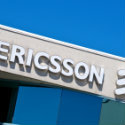Ericsson's top researcher painted a 6G picture that involves a 'full sense experience' complete with sights, sounds and haptics that would create multisensory experiences.

Ericsson's chief researcher is beginning to lay out the infrastructure vendor's initial 6G talking points, and he's painting quite the picture: "We see a future where the smartphone will not even be needed," said Magnus Frodigh during a recent virtual event.
Even more provoking: "Advanced technology will enable the Internet of senses," he said.
Frodigh joined Ericsson in 1994, and today he leads 700 technologists at Ericsson Research. He made his comments at the recent IEEE 5G++ Summit Dresden virtual event in a session titled "The Journey to 6G."
Ericsson is just the latest major infrastructure vendor to throw its hat into the 6G ring. For example, Nokia's CTO Marcus Weldon spoke at length last year about the possibility of transmissions above 95GHz and 6G. Samsung earlier this year set out its vision for next-generation mobile, predicting it could debut as early as 2028. And test equipment maker Rohde & Schwarz has already launched a website, hashtag and general-purpose testing rig for 6G communications.
But Ericsson's entry into the category is noteworthy considering its leading position in the market for 5G equipment. Moreover, Ericsson's actions appear to officially dispel the notion briefly floated by some in the industry that 5G would be the "last G."
Based on comments from Ericsson and a wide range of other players, many now expect 6G to become commercially available in the 2030 timeframe.
So what might 6G enable that 5G cannot? Ericsson's Frodigh certainly has some high expectations.
He said 6G could support a "full sense experience" complete with sights, sounds and haptics that would create augmented and virtual reality multisensory experiences "as if you were there."
Frodigh's 12-minute presentation was mostly chock-full of vague buzzwords like "network platform," "cognitive network" and "network compute fabric" supporting a "digitized and programmable world." But he also showed a short demonstration video sporting sky-high production values of what a 6G evening might look like: A young woman organized a surprise, Arabian-themed dinner party with three of her suitably diverse friends (communications were conducted via augmented reality rather than thumb-typing on tiny screens) and then she digitally sampled a range of recipes before meeting at a presumably digitized ocean-side location where everyone hid behind their fully digital cartoon avatars. None of the friends used a phone, and it all looked very "Ready Player One."
The technologies powering the demonstration were not specified, but Ericsson has hinted at products like a machine-brain interface, headbands that can transmit sound and "a device in your mouth that digitally enhances the food you eat."
Frodigh did acknowledge some of the technologies that others in the space like Nokia have discussed in relation to 6G, including operations in super-high frequency bands like those above 100GHz, zero-power and zero-cost sensors, and "digital twins" of objects and places.
He also stressed that technologies like edge computing and artificial intelligence would be required to make such experiences possible. Importantly, he emphasized the importance of security in 6G, which is likely a nod to the growing discussion around the development of 6G technology from a geopolitical standpoint; those in the global industry are increasingly worrying over the prospect of a bifurcation between the US and China over 6G technology.
Nonetheless: "We have a journey to 6G in front of us, a very exciting journey," Frodigh said.
Related posts:
— Mike Dano, Editorial Director, 5G & Mobile Strategies, Light Reading | @mikeddano
About the Author(s)
You May Also Like











